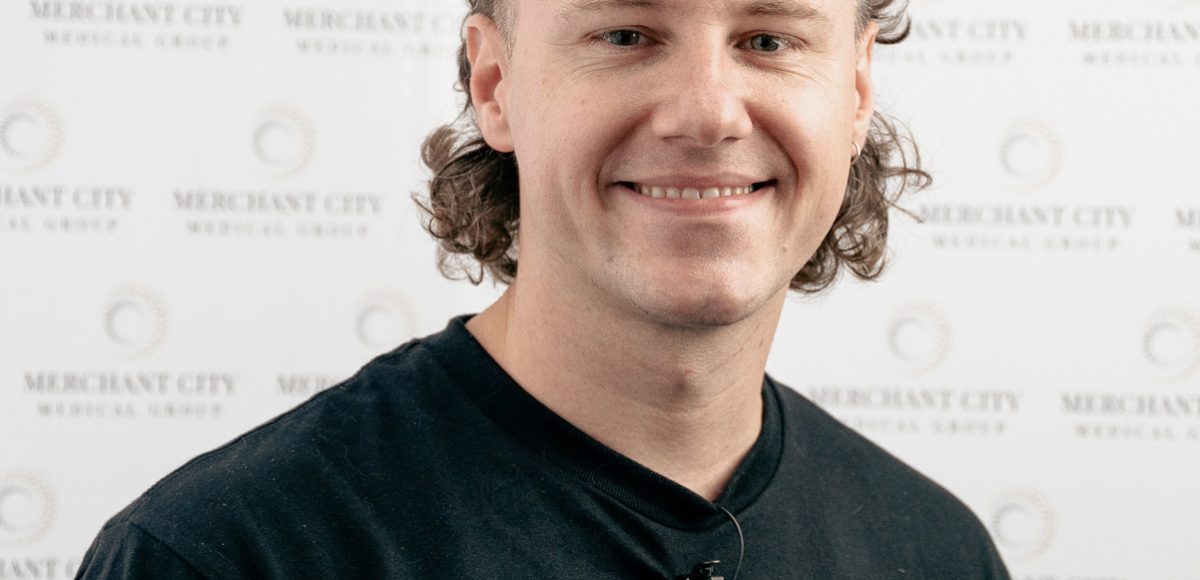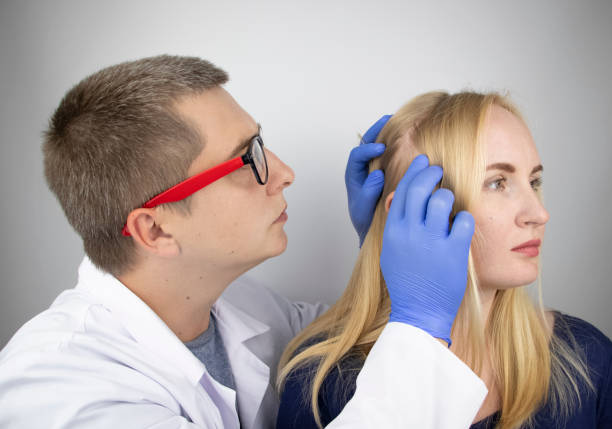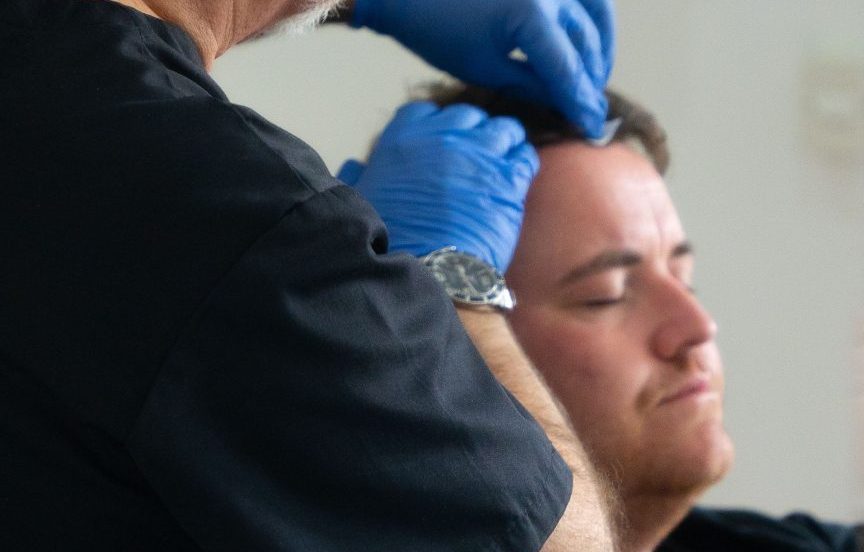
Why is Hair Transplant Gaining Popularity in the UK?
Are you aware that hair transplants have recently gained popularity in the UK ?
In addition to the world’s population, it appears that hair—or at least the desire for it—is also expanding. Baldness is no longer desirable for everyone since the hair transplant industry is growing like a party confetti cannon. People are swarming to hair salons more quickly than you can say “comb-over,” whether it’s the attraction of a thick mane or the fear of being bald. Even people with follicle-challenged conditions are discovering new ways to grow hope as non-surgical treatments become more popular. The statistics show that the hair transplant success rate has increased to 90-95 percent. Any procedure with such positive rates would surely grow in popularity. Do you doubt it? Well, let’s dive into why hair transplants in the UK have gone viral. Shall we?




Understanding Hair Transplantation
First things first, let’s understand the meaning of hair transplantation. Generally, a hair transplant is a surgery procedure performed by dermatologists who move hair from balded or thinned areas of the scalp and specialise in skin care. Hair transplants are typically performed on patients who have already tried other hair loss treatments. In the UK, hair transplantation mostly involves two well-known methods: follicular unit transplantation (FUT) and follicular unit extraction (FUE).
FUE Hair Transplant in the UK is more popular than FUT since most clinics and patients. These are the differences between these two hair transplant surgeries for a clearer picture. Look at the table below.
Here’s a table highlighting the main differences between these two hair transplant methods:
FUT (Follicular Unit Transplantation) and FUE (Follicular Unit Extraction):
| Feature | FUT (Follicular Unit Transplantation) | FUE (Follicular Unit Extraction) |
|---|---|---|
| Harvesting Method | A strip of skin is removed from the targeted donor area, and hair follicles are dissected from this strip. | A punch tool extracts Individual hair follicles directly from the donor area. |
| Scarring | Results in a linear scar at the donor area, which may be visible if the hair is short | Leaves tiny, dot-like scars scattered across the donor site, which are less noticeable. |
| Healing Time | Longer healing time due to the incision made for the strip removal | Faster healing time since no large incision is made. |
| Number of Grafts per Session | Typically allows for more needed grafts to be transplanted in a single session. | Generally involves fewer grafts per session, making it more suitable for smaller areas. |
| Cost | Generally less expensive due to the simpler harvesting technique. | It tends to be more expensive because of the time-intensive extraction process. |
Factors Contributing to Hair Transplant Popularity in the UK
For anything to grow in popularity in the modern world, it must be trending mostly on social media. The ballooning popularity of hair transplants in the UK is no different. Let’s discuss the factors that have contributed wholesomely.

Many men battle hair loss throughout their lives. When one’s hairline recedes, it can feel like losing one’s identity. The post about the transplant makeover has gained popularity on social media. Social media platforms have recently changed how we exchange information and communicate.
Because video footage is widely available, users and influencers share their experiences and travel with hair restoration treatments, increasing industry engagement.
Innovation is at the core of the hair restoration sector. Technological advancements improve current therapeutic approaches by introducing new techniques and technologies. The following are some significant technological developments influencing hair restoration in the future.
- Stem Cell Therapy
Emerging treatments use stem cells to regenerate hair follicles, offering a promising solution for more natural and sustainable hair growth. - 3D Printing of Hair Follicles
This technology aims to create artificial hair follicles using 3D bioprinting, potentially addressing challenges like donor area limitations. - Robotic-Assisted Transplants
Advanced robots enhance precision in FUE procedures, making the process faster, less invasive, and yielding better results. - Gene Therapy
Researchers are exploring gene editing techniques, such as CRISPR, to target and repair genetic factors that lead to hair loss, paving the way for long-term prevention.
Hair transplants in the UK have grown in popularity and accessibility in recent years. Why? The cost has been reduced; now, most people can afford the surgery. The cost of a hair transplant in the UK has historically been one of the main obstacles. The price of cosmetic operations is well known, and for many years, individuals were compelled to look elsewhere for less-priced alternatives.
However, this trend is gradually changing as prices are getting more affordable. Then, what is the price of a hair transplant? Prices start at roughly £2,500 for a modest surgery and go up to £7000+ for greater graft numbers, having practically halved over the past ten years.
In the UK, hair loss and balding concerns are rising daily. The balding process starts with hair thinning, followed by patchy hair loss. This has caused an increase in the number of clients interested in hair transplants.
The statistics indicate that hair transplant surgeries in the UK have increased by over 40% in the past five years, with approximately 30,000 people seeking the procedure annually. This rise is due to advancements in hair transplant methods, including Follicular Unit Extraction (FUE), which offers natural-looking results with minimal scarring.
Hair restoration’s growing acceptance and visibility have encouraged more individuals to seek treatment. As more people prioritise aesthetic confidence, the demand for hair transplants will continue growing.
Hair restoration is only one of the many medical specialties that have made the UK a centre of excellence. Expert surgeons in London, Manchester, and other big cities offer top-notch care comparable to clinics in nations like Turkey or Hungary that have historically been popular for cosmetic surgery.
The degree of regulation and the trust associated with the UK’s healthcare system set it apart. By getting a hair transplant in the UK, you are entrusting yourself to healthcare providers who are held to some of the highest standards in the whole world.
With a thorough understanding of the anatomy of the scalp and hair growth patterns, several clinics now specialise in hair restoration and employ highly skilled surgeons. As a result, treatments become more accurate and customised.
When people sense they are in good, competent hands, they are more inclined to invest in their looks. With a thorough understanding of the anatomy of the scalp and hair growth patterns, several clinics now specialise in hair restoration and employ highly skilled surgeons.
The increased occurrence of hair loss among younger demographics has increased the demand for preventive therapies and hair care products.
Are you aware that companies are responding to this trend by introducing specialised formulations and treatments lately? Such tailored treatments mostly target early-stage hair loss while maintaining the scalp’s health to avoid further thinning.
The future of the hair loss industry in the UK looks promising. More research, new technology, and better treatments are expected. Exciting developments like personalised medicine, gene therapy, and regenerative medicine could change how we treat hair loss.
These new methods might give people treatments tailored to their genes and what’s causing their hair loss.
Selecting the Right Hair Transplant Clinic in the UK
Now that hair popularity in the UK has exploded, settling for a good hair transplant clinic is good.
These are the tips on how to do so.
Research the Hair Transplant Clinic
Try to find out how long the hair transplant clinic has been in operation to get some assurance that it can offer you any necessary aftercare.
The clinic’s website can be searched for testimonials, independent websites such as Trustpilot can be used for client evaluations, a Companies House listing can be found, or their social media pages can be examined to discover when their initial messages were written.
Visit the Clinic in Person
If possible, it is strongly advised to visit the clinic before deciding. A firsthand visit to a clinic can teach you a lot. Take note of the surroundings’ general cleanliness and professionalism. A respectable clinic will uphold strict hygienic standards, and its personnel should be kind and well-informed.
Request to view before-and-after pictures to see samples of their prior work. Several clinics have portfolios of patient results to give you a sense of what to expect. Look for natural-looking outcomes and ensure the hairline style fits the patient’s face shape.

Confirm the Clinic’s Aftercare Service
It is impossible to overestimate the significance of aftercare for hair transplants. Leaving the clinic is not the end of a successful operation. Post-operative care is crucial for the transplanted hair to grow organically and for the scalp to heal correctly.
A respectable facility must offer thorough aftercare guidelines and follow-up consultations to track your development. The aftercare package should include instructions on how to care for your scalp, anti-infection drugs, and a list of things to avoid while recovering. Check if the clinic provides emergency assistance or guidance if issues develop following the surgery.
Identify the Surgeon Handling Your Hair Transplant Surgery
Verify the qualifications of the person performing your hair transplant by getting to know them by name (i.e., any letters after their name). A skilled hair transplant physician is likely registered with the International Society of Hair Restoration Surgery (ISHRS); therefore, be cautious of those who are not.
Confirm that a qualified surgeon will perform the entire procedure, including follicle extraction, for FUE procedures.

What is the Clinic’s First Impression?
No matter how much research you do beforehand, your first consultation is your only chance to get a first-hand impression, so see how you feel on the day. Look for signs of professionalism, such as scanning your donor and graft areas with a digital microscope to identify characteristics that cannot be seen with the naked eye.
If it appears your “surgeon” depends on guesswork or prior experience without completing the math, this could also be a warning sign. A reputable hair transplant facility will meticulously determine the number of follicles that require transplantation.
At Merchant City Medical Group, our highly skilled and knowledgeable staff of hair transplant specialists will help you determine the best course of action.
How Are Their Reviews on Platforms Like Google
In recent years, examining internet reviews has become an essential component of the consumer research lifecycle, whether one wants to use a service or buy a product. The best way to do this is to get information from patients who have already used the service.
When choosing a hair transplant clinic, always examine the feedback left by previous clients on their website, Google Reviews, social media pages, and other review sites. This will help you understand the good, the bad, and the ugly.
Clinic Registration With the Right Bodies
Beware of popular unlicensed hair transplant clinics. High-quality clinics like Merchant City Medica Group in the UK are all registered. Registration with the appropriate regulatory and quality control organisations is important to support patient safety and best practices.
Just Like London, Glasgow, and our Belfast clinic, all legit clinics that carry out hair transplants should be:
- Enlisted with the Care Quality Commission (CQC) and whose CQC registration is available for you to view on their website.
- Only hire physicians and surgeons with licenses registered with the General Medical Council (GMC), Check our team
There are over 100 hair transplant clinics in the UK, so knowing the above is critical to ensuring your chosen clinic satisfies the two requirements. It is also crucial to confirm the clinic by searching for it on both the CQC and GMC websites.
Avoiding hair transplant broker firms is also advised since they would only sell you a hair transplant and send you to another clinic against your will.
In Conclusion
Hair transplant popularity in the UK will continue growing, and many additional developments are anticipated. Since new technologies are constantly being created, the process will probably become even more accessible and efficient.
Additionally, as more clinics operate and competition grows, the cost will drop, making hair transplants a viable choice for a wider range of people. What was formerly considered a luxury for the wealthy and well-known is now more accessible than ever.
Merchant City Medical Group is ready for your hair loss treatment. Paul Mulholland, our experienced consultant, is proud of his services and is regarded as one of the most professional hair loss and restoration consultants in the UK and Ireland. He has seen more than 20,000 patients. Contact us today to book your free consultation.



